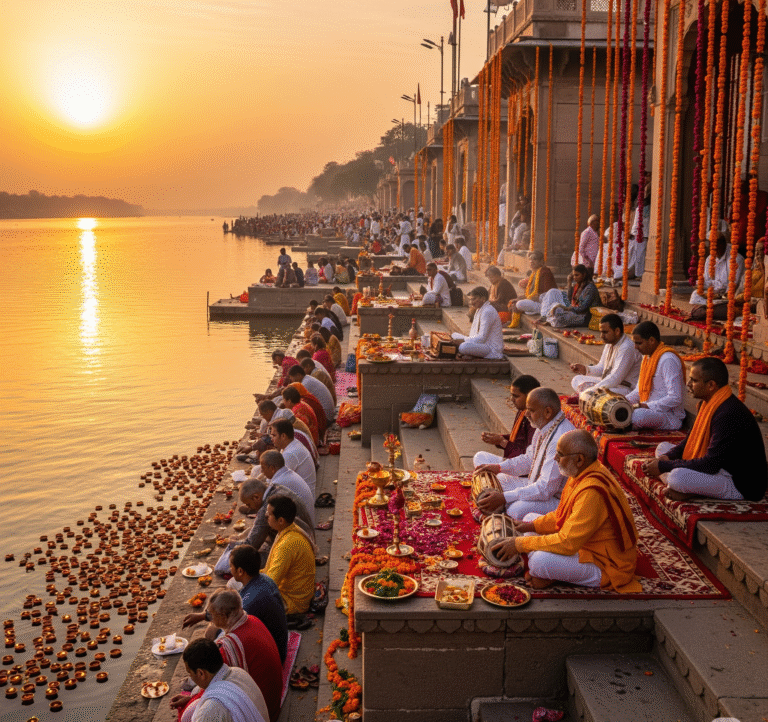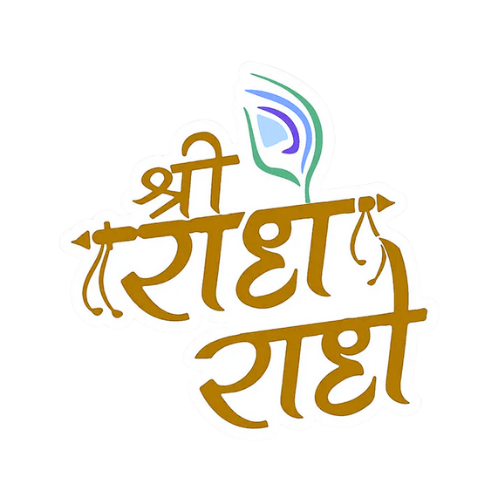
Close

Here, time moves with Krishna’s footsteps. Every season, every month, every day holds a festival — for Braj itself is a divine stage where Radha and Krishna’s leelas are re-enacted for eternity

In the rest of the world, festivals come and go with the calendar. In Braj, festivals are not celebrations of time —they are re-livings of eternity. Every season is Krishna’s play. Every month is Radha’s smile. Every day is a festival where the soul rediscovers its home. Here, drums beat not for crowds, but for Krishna’s steps. Colors are not thrown—they are Radha’s laughter in the air. Lights are not lit—they are devotees’ hearts set aflame with love.
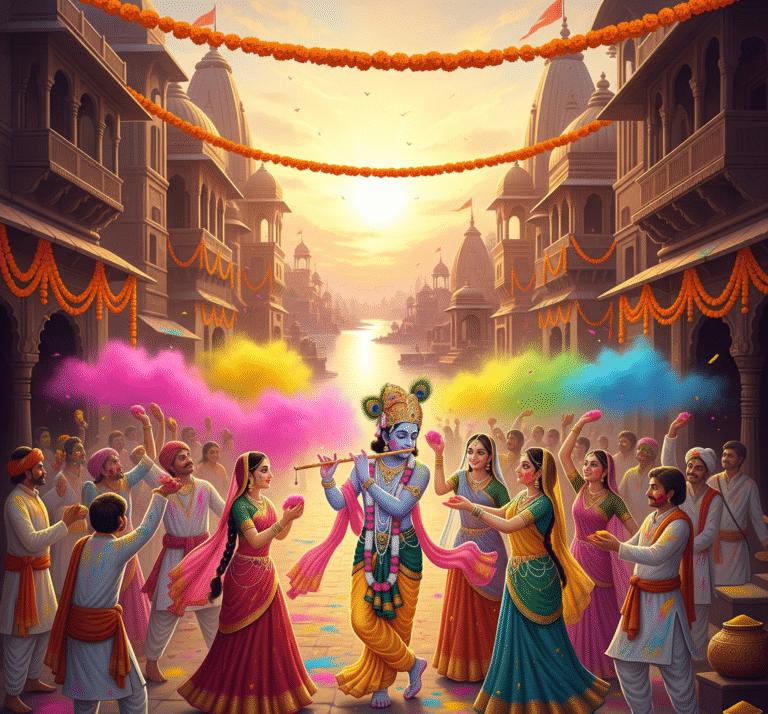
In Braj, Holi is not merely colors on the skin—it is the splash of Radha-Krishna’s love upon the soul. Every lane, every temple, every song of Braj becomes drenched in devotion and divine joy.
In Braj, Holi is not merely a seasonal festival—it is the eternal reminder of the divine play (leela) of Radha and Krishna. Every color is devotion, every petal is grace, every laugh is a prayer, and every moment is soaked in prema (love). To witness Holi here is to experience a glimpse of the spiritual Vrindavan, where the soul forgets itself and remembers only the joy of surrender in Radha-Krishna’s eternal embrace.
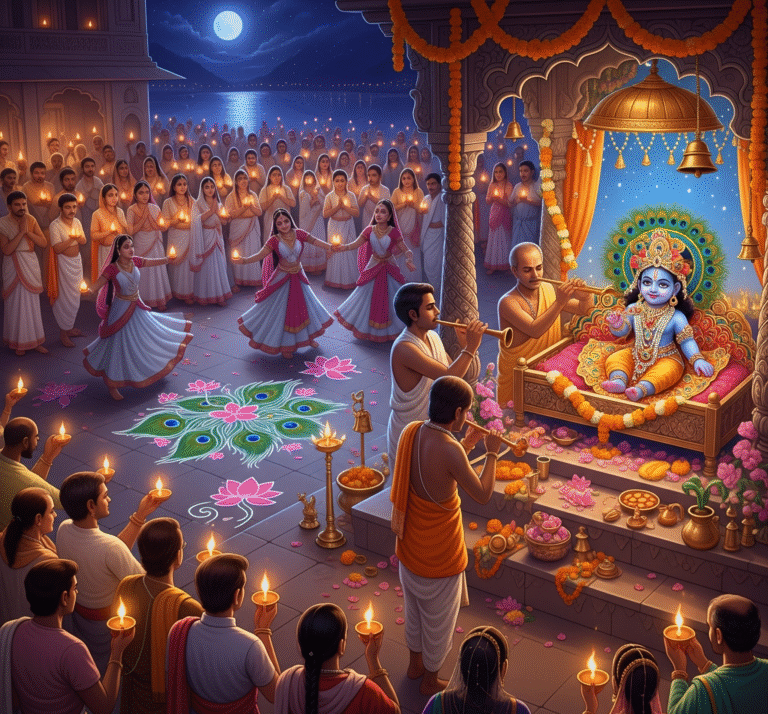
At the stroke of midnight, when the stars themselves seemed to pause, the eternal sound of conch shells filled the holy prison of Mathura. The shackles fell away, doors opened, and the Supreme Being appeared—not as a mighty warrior, but as a tender child—Sri Krishna. From that divine moment, Vrindavan and Mathura awaken each year, drenched in devotion, song, and festivity.
Janmashtami in Mathura and Vrindavan is not just a festival—it is a living memory of Krishna’s presence. The Yamuna whispers his name, the kadamba trees remember his footsteps, and the gopis’ songs still echo in the wind. In every lamp lit, in every song sung, the eternal child Krishna is born again, filling the world with love, light, and divine joy.

Radha Ashtami is not just a festival—it is the soul of Vrindavan. It is the reminder that beyond rituals and celebrations, what Krishna truly accepts is the offering of love, and that love is Radha Herself.
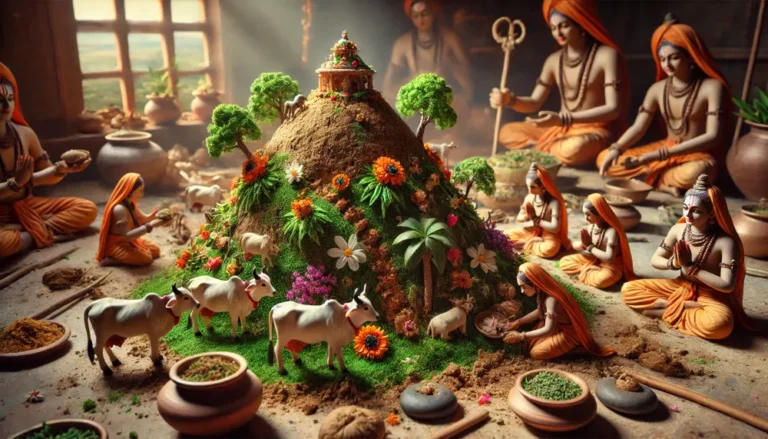
The day after Diwali, Braj Mandal glows again—not with lamps this time, but with the divine celebration of Govardhan Puja. This festival commemorates the immortal pastime when our beloved Shri Krishna, with the tender finger of His left hand, lifted the mighty Govardhan Hill to shelter the entire Braj from the torrential rains and fury of Lord Indra. For the Brajwasis, this is not just history—it is their eternal faith, their very heartbeat.
Thus, Govardhan Puja in Vrindavan is not just a festival—it is a celebration of Krishna’s love, Giriraj Maharaj’s mercy, and the eternal bond between the Lord and His devotees. The Annakut becomes a symbol of abundance, the Parikrama becomes an offering of surrender, and the entire Braj resounds with joyous cries: “Radhe Radhe! Giriraj Dharan ki Jai!”

Known as the Grand Farewell Fair of Braj, Mudiya Mela is one of the most significant gatherings at Govardhan. It is not just a fair, but a divine pilgrimage of the heart, where devotees re-live the separation and eternal union with Shri Krishna.
It is said that whoever attends Mudiya Mela with a pure and longing heart, never returns empty-handed – for Shri Krishna Himself blesses them with inner wealth, eternal love, and the joy of belonging to Braj forever.
